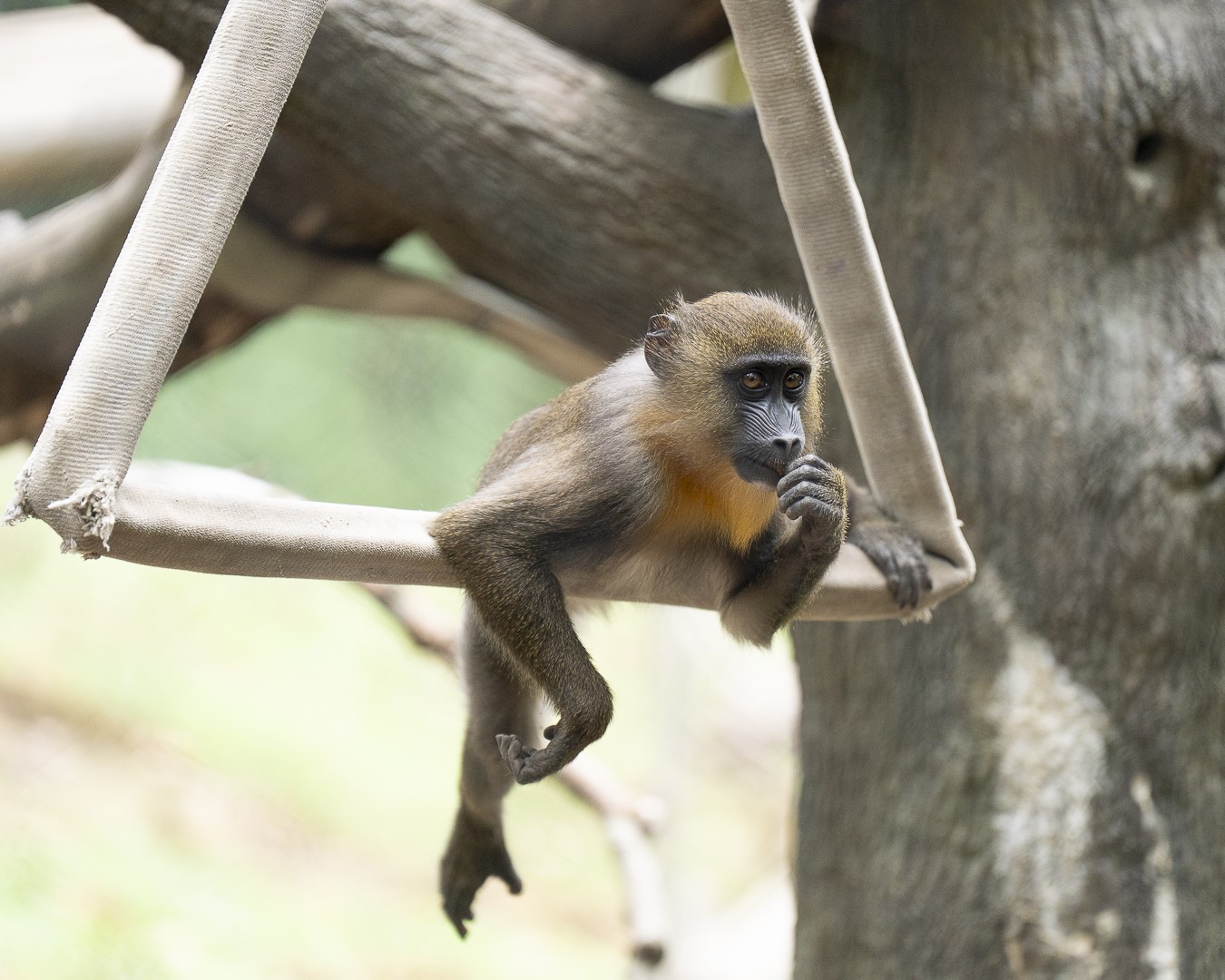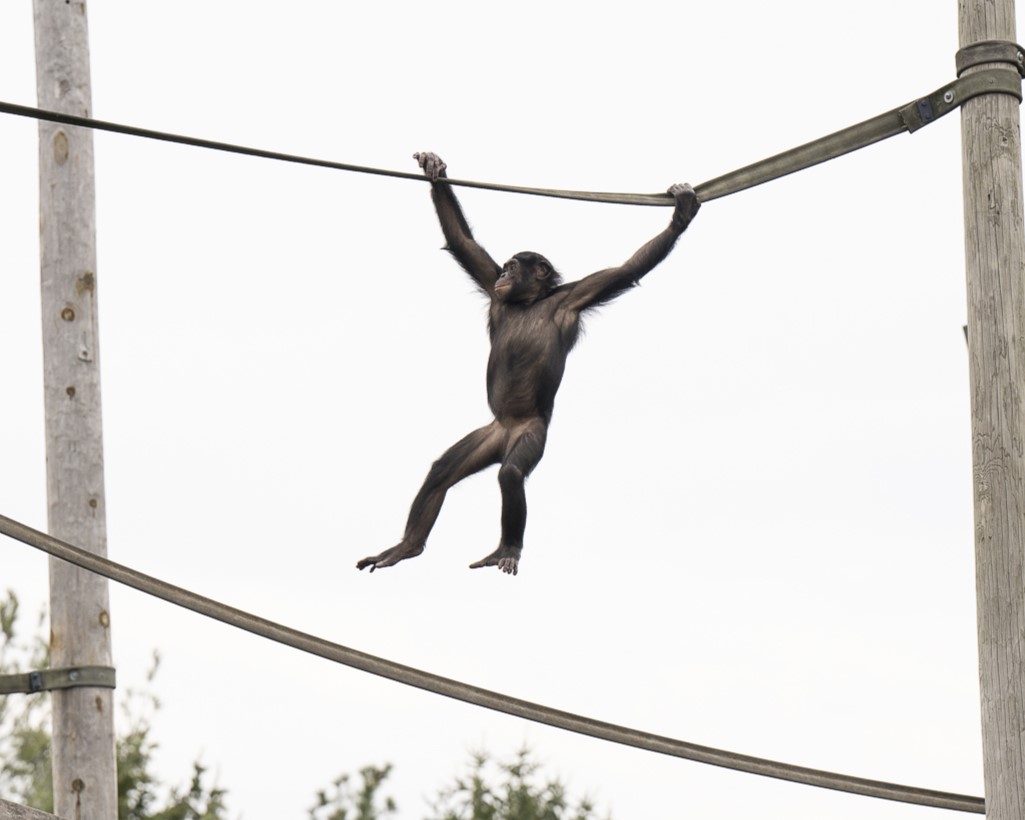Special thanks to Fire Marshal Shad Gilbert of Liberty Township Fire Department, Assistant Chief Shawn Kelly of Radnor Township Fire Department, and Audra Meinelt, curator of the Congo Expedition region at the Columbus Zoo and Aquarium for their contributions.

The repurposing of retired fire hose at the Columbus Zoo and Aquarium showcases an inspiring collaboration between local fire departments and the Zoo. What began as lifesaving firefighting equipment, used to protect communities, now finds new life in animal habitats, where it enhances animal wellbeing and sustainability efforts, too!
Through this partnership, the Zoo repurposes fire hose for climbing structures, beds, and enrichment toys for various animal species, offering an excellent opportunity to highlight the work of first responders and how their equipment continues to make a difference—even after retirement.
Lifespan and Durability of Fire Hose
Both Fire Marshal Shad Gilbert from Liberty Township Fire Department and Assistant Chief Shawn Kelly from Radnor Township Fire Department (both in Delaware County, OH) shared insights into the lifespan of fire hose. Typically, a fire hose is replaced after about 10 years of use, though rigorous annual testing can result in earlier retirements if any damage or wear is detected.
- Depending on their type, fire hose is tested under pressures of 200-300 psi and must hold that pressure for at least five minutes to pass inspection.
- Firefighters inspect hose for leaks, excessive wear, or damage from extreme heat during firefighting operations.
- Once retired from firefighting, these hoses are too valuable to discard, which led to innovative reuses such as donation to the Zoo.

Fire Hose Composition and Its Use at the Zoo
At the Columbus Zoo, fire hose plays a major role in animal enrichment, providing durable material for swings, pathways, and climbing structures. According to Audra Meinelt, curator of the Zoo’s Congo Expedition region, "Fire hose is extremely versatile. We hang it to make pathways between spaces, braid or weave it to create resting areas, or use it to mimic vines for climbing."
- Modern fire hose is made of synthetic materials like nylon or polyester, making them durable under a variety of conditions.
- The Zoo can use hoses of various diameters for different purposes, from creating sturdy swinging vines to support pathways for apes and primates.
- Hoses are easy to clean and maintain, making them a reliable and cost-effective option for animal habitats.
Fire Departments' Contribution to Sustainability
The partnership between the Columbus Zoo and local fire departments extends beyond animal care—it's also a sustainability initiative. Both Fire Marshal Gilbert and Assistant Chief Kelly emphasized that fire hose is made from materials that do not break down easily in landfills, so finding alternative uses is essential.
- Donating hoses to the Zoo reduces waste and helps protect the environment.
- Some fire departments also donate hose to training programs for future firefighters, ensuring the hoses are put to use long after their service life on the front lines.
- This focus on repurposing aligns with the Columbus Zoo’s commitment to sustainability, further extending the lifecycle of critical materials.
“Sustainability was actually the primary consideration with our donation to the Zoo,” said Assistant Chief Kelly. “Rather than add a truckload of fire hose to a landfill, we wanted to make an effort to donate the hose in a way that it could be repurposed.”
How Animals Benefit from Fire Hose
The use of fire hose in Zoo habitats allows the animals to interact with their environment in ways that mimic their natural behaviors. For primates like gorillas and orangutans, fire hose provides climbing challenges and pathways that simulate tree branches or vines, helping to keep them physically active and mentally stimulated.
- Primates such as bonobos use hanging hose to spin and swing, behaviors that promote natural play and social interaction.
- The strength and flexibility of the hose supports large animals while also providing stability for older animals with mobility challenges, similar to handrails used by humans.
- Enrichment items like knotted browsers made from fire hose allow zookeepers to hide food, encouraging animals to engage in problem-solving behaviors.

Firehose Maintenance and Safety in Habitats
Just as fire departments regularly inspect their hose to ensure safety, the Zoo staff also conducts routine maintenance to ensure the fire hose in animal habitats remain in top condition. Meinelt explained that the Zoo inspects the hoses daily, checking for signs of fraying or wear. If a hose becomes difficult to clean or starts to show significant wear, it is replaced.
- Fire hose is particularly well-suited for use outdoors since it’s designed to handle water, reducing the risk of rot or mildew.
- Compared to other materials like rope, fire hose is easier to inspect for damage, making them safer for animals that interact with them regularly.
- Regular maintenance ensures that animal safety remains the top priority, even when using repurposed materials.
Collaboration and Community Impact
For local fire departments, the opportunity to donate retired hose to the Columbus Zoo is not just a way to practice sustainability—it’s a way to give back to the local community. Firefighters like Shad Gilbert take pride in seeing their equipment serve new purposes. “It's a point of pride for us to know that these hoses are still serving a vital purpose,” Gilbert explained.
- The collaboration between fire departments and the Zoo highlights the strong sense of community between local organizations in Central Ohio.
- The Zoo benefits from receiving free, high-quality materials, allowing them to reallocate funds to other areas of animal care.
- Zoo guests get to enjoy watching the animals engage with enrichment items made from repurposed firefighting gear, making the partnership a conversation starter for visitors.
Through this partnership, the Columbus Zoo and local fire departments demonstrate the power of creative reuse and community collaboration. By repurposing retired fire hose, the Zoo improves the wellbeing of its animals while also supporting environmental sustainability. Firefighters, in turn, find a meaningful way to extend the life of their equipment, knowing that it continues to contribute to the community in new and exciting ways.
“As Fire Marshal, I get asked frequently what the best part of my job is, and my answer is always, working with the Columbus Zoo,” said Gilbert. “Working with the Zoo has afforded our department with many unique experiences, not only through emergency responses but also through training. And finally, as a lifelong resident of Central Ohio, the Zoo has always been a point of pride for the area, and it makes me proud to known that I get to work with such an amazing group of people and their world class facilities.”
Both fire service personnel and Zoo supporters can take pride in this ongoing effort—a shining example of how two different worlds can come together for a common good.










